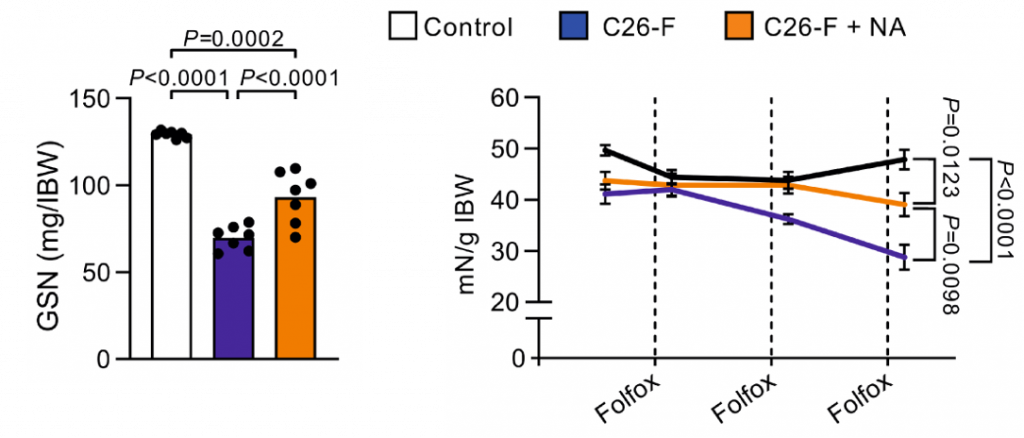Key Points:
- Patients with colon or pancreatic cancer display a reduction in a key NAD+-synthesis enzyme called NRK2.
- In a mouse model for colon cancer, niacin helps restore muscle NAD+, muscle mass, and muscle strength.
- Niacin improves citrate synthase activity, an indicator of mitochondrial health and energy metabolism.
Over half of all cancer patients endure the repercussions of cachexia, a devastating syndrome characterized by extreme weight loss and muscle deterioration. To date, no effective treatments for this syndrome exist. However, recent studies conducted by scientists in Italy and Finland suggest that augmenting NAD+ levels might present a solution.
Published in Nature Communications, research by Beltrà and colleagues indicates that enhancing NAD+ levels using niacin leads to an increase in muscle mass and strength, as observed in a mouse model for colon cancer. Furthermore, the study shows that niacin could address signs of mitochondrial dysfunction in muscle tissue, implying that this B vitamin could alleviate age-related mitochondrial dysfunction.

NAD+ Repletion with Niacin Counteracts Cancer Cachexia
Beltrà and colleagues examined three different mouse models for cachexia and found they all tended to have low muscle NAD+ and NRK2 levels, alongside diminished muscle mass. To validate this data in humans, NRK2 (Nrk2 in mice) gene activation was measured from muscle samples donated by colorectal and pancreatic cancer patients. It was found that NRK2 gene activation was reduced in weight-stable patients and patients with cachexia, suggesting that reduced NRK2 may precede cachexia in cancer patients.

The effect of niacin on cachexia was explored by first inducing cancer in mice by injecting them with colon cancer cells. Beltrà and colleagues then dissolved 150 mg/kg of niacin in water and administered it to the cancer mice daily for about 3 weeks. During this 3-week period, the cancer mice were treated with a chemotherapy drug called Folfox, which is known to exacerbate cachexia.
Niacin treatment not only raised the muscle NAD+ levels of the cancer mice but also largely restored their muscle mass and improved their grasping strength. These findings indicate that niacin can effectively address the primary symptoms of cancer cachexia — namely, loss in muscle size and strength.

To find how niacin could be alleviating the symptoms of cachexia, the researchers measured several features of mitochondria, including citrate synthase activity. Citrate synthase is the first enzyme in the Krebs cycle, which is essential for metabolizing the food we eat into energy. It was found that niacin elevated citrate synthase activity, suggesting that niacin improves mitochondria-mediated energy metabolism.

Overall, the findings of Beltrà and colleagues’ study suggest that restoring NAD+ levels with niacin counters cachexia by improving the health of mitochondria. While cachexia usually occurs in instances of disease, including cancer and AIDS, loss of muscle mass and strength also occurs as a consequence of aging. Thus, niacin and other NAD+-boosting compounds may provide potential means to mitigate natural muscle decline.
Boosting NAD+ to Counter Muscle Aging
Sarcopenia is the age-related decline in muscle quality, size, and strength. Aside from a protein-rich diet and resistance training, there are no effective treatments for sarcopenia. However, given that muscle NAD+ content decreases with age, replenishing NAD+ levels may potentially counter natural muscle loss.
Several recent animal studies support this, including a study showing that the NAD+ precursor nicotinamide mononucleotide (NMN) reverses features of muscle aging. Additionally, another study showed that increasing NAD+ levels by activating one of its synthesis enzymes with a drug called P7C3 increases muscle strength and size. Furthermore, exercise has been shown to boost NAD+ levels in older adults and improve physical performance, as measured by steps walked per day. Therefore, boosting NAD+ may offer promising potential in preventing or delaying the onset of sarcopenia.